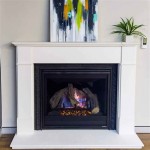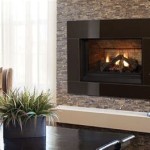Tile Fireplace Decor: Enhancing Your Hearth
A fireplace serves as a focal point within a living space, offering warmth and visual appeal. The decorative tiles surrounding a fireplace significantly contribute to its overall aesthetic. Selecting the appropriate tiles requires careful consideration of various factors, including material, style, color, and pattern, to complement the existing décor and architectural design of the room.
Tile fireplaces offer a durable and visually striking alternative to traditional brick or stone. The versatility of tile allows for a wide range of design possibilities, from classic and understated to modern and bold. The selection of tile impacts not only the aesthetics of the fireplace but also its long-term maintenance and performance.
Material Considerations for Fireplace Tiles
The material chosen for fireplace tiles directly impacts their durability, heat resistance, and overall appearance. Several options are available, each possessing distinct characteristics.
Ceramic Tile: Ceramic tiles are a popular choice due to their affordability, wide range of colors and styles, and ease of maintenance. They are generally suitable for fireplace surrounds, but their lower heat resistance compared to other materials makes them less ideal for areas directly exposed to high temperatures within the firebox. Ceramic tiles are manufactured from clay and fired at high temperatures, resulting in a durable and water-resistant surface. However, it is crucial to select tiles specifically rated for fireplace use to ensure they can withstand the fluctuating temperatures surrounding the hearth.
Porcelain Tile: Porcelain tiles offer enhanced durability and heat resistance compared to ceramic tiles. They are manufactured using a denser clay and fired at even higher temperatures, resulting in a less porous and more robust material. This makes porcelain ideal for fireplace surrounds and even the firebox, depending on the specific temperature ratings. Porcelain tiles are available in various finishes, including matte, glossy, and textured, providing ample design options. The non-porous nature of porcelain makes it highly resistant to stains and moisture, simplifying maintenance and extending the lifespan of the fireplace surround.
Stone Tile: Natural stone tiles, such as granite, marble, and slate, offer a luxurious and timeless aesthetic. Stone tiles are exceptionally durable and heat resistant, making them suitable for both fireplace surrounds and fireboxes. However, stone tiles can be more expensive and require specialized installation techniques due to their weight and natural variations. Granite is particularly resistant to heat and scratches, while marble provides a classic and elegant look. Slate offers a more rustic and textured appearance. The natural variations in color and pattern found in stone tiles add unique character to the fireplace.
Glass Tile: Glass tiles provide a modern and reflective surface, adding light and visual interest to a fireplace. Glass tiles are typically used for decorative accents or in combination with other materials due to their lower heat resistance. They are available in a wide range of colors, shapes, and sizes, allowing for intricate and personalized designs. Glass tiles are easy to clean and maintain, making them a practical choice for certain areas of the fireplace surround. However, it is crucial to select tempered glass tiles specifically designed for fireplace applications to ensure they can withstand the heat and prevent cracking.
Style and Design Considerations
The style of the tile should complement the overall design aesthetic of the room. Consider the existing furniture, wall color, and architectural details when selecting tiles for the fireplace surround.
Modern and Minimalist: For modern interiors, consider using large-format tiles with clean lines and neutral colors. Geometric patterns or mosaic tiles can add subtle visual interest without overwhelming the space. The focus should be on simplicity and functionality, creating a sleek and uncluttered look.
Traditional and Classic: For traditional homes, consider using marble or ceramic tiles with intricate patterns or decorative accents. Subway tiles or handcrafted tiles can add a touch of classic charm. The goal is to create a warm and inviting atmosphere that complements the architectural details of the home.
Rustic and Natural: For rustic interiors, consider using stone tiles with textured surfaces and earthy tones. Slate or river rock tiles can add a natural and organic feel to the fireplace. The emphasis should be on creating a cozy and inviting space that reflects the surrounding environment.
Eclectic and Bohemian: For eclectic interiors, consider mixing and matching different tile styles and colors. Mosaic tiles, patterned tiles, or handcrafted tiles can add a unique and personalized touch to the fireplace. The key is to create a cohesive and visually appealing design that reflects individual style.
Installation and Maintenance
Proper installation is crucial for the longevity and performance of tile fireplaces. It is recommended to hire a professional tile installer to ensure the tiles are properly adhered and grouted.
Preparation: Before installation, the surface must be adequately prepared by cleaning and leveling it. This is critical for ensuring the tiles adhere correctly and the finished surface is even. Depending on the existing surface, this may involve removing old materials, applying a leveling compound, or installing a cement backer board. A clean and stable substrate is essential for a successful and long-lasting tile installation.
Adhesive: Use a high-quality thin-set mortar specifically designed for tile installation on fireplaces. The type of mortar will depend on the tile material and the substrate. Ensure the mortar is applied evenly and according to the manufacturer's instructions. Choosing the correct adhesive is crucial for withstanding the heat fluctuations and ensuring the tiles remain securely attached over time.
Grouting: After the tiles have been installed and the mortar has cured, grout the joints between the tiles. Select a grout color that complements the tile and the overall design scheme. Applying a sealant to the grout can help protect it from stains and moisture. Proper grouting is essential for preventing water damage and maintaining the aesthetic appeal of the fireplace.
Maintenance: Regularly clean the tile surface with a mild detergent and water. Avoid using abrasive cleaners or harsh chemicals, as they can damage the tile surface. Inspect the grout for cracks or damage and repair as needed. Sealing the grout periodically can help protect it from stains and moisture. Proper maintenance will ensure the tile fireplace remains beautiful and functional for years to come.

Fireplace Tile Ideas Designs To Inspire You

53 Best Fireplace Tile Ideas And Designs With S For 2024 Mantel Decor Mantle Design

Fireplace Tile Ideas Designs To Inspire You

30 Most Beautiful Fireplace Tile Ideas For 2024 Decor Home Design Surround

6 Fireplace Design Ideas Tile Warehouse

Hot Fireplace Tile Trends Bedrosians Stone

These Tiled Fireplaces Are Swoon Worthy Tileist By Tilebar

Fireplace Feature Wall Ideas Queen City Stone Tile

Get Home Holiday Ready With A Mantel Decor Refresh Fireplace Tile Surround

Fireplace Tiles Best 253 Ideas Designs 2024 Ramirro
Related Posts








